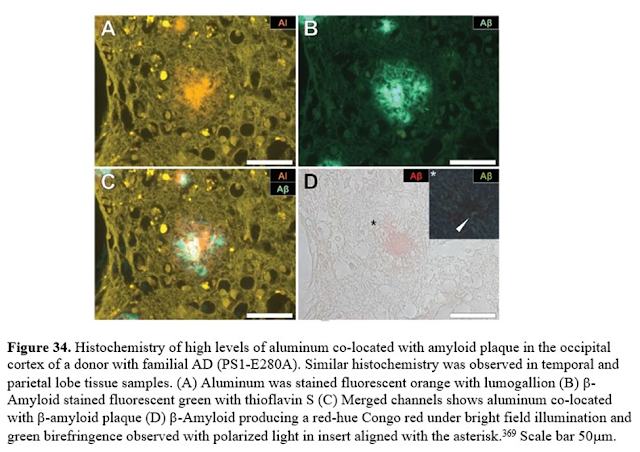Silicia
Water for Gouty Arthritis by Dennis
N. Crouse 2/20/23
Gouty arthritis (a.k.a.
gout) is characterized by rapid onset of severe pain, redness of the skin, and
swelling1. The etiology of gout involves excessive production of
monosodium urate monohydrate crystals (a.k.a. trophi) in the synovial fluid of
joints2,3. Approximately 10% of patients with hyperuricemia (i.e.,
excessive uric acid in the blood) develop gout in their lifetime4. Overall
prevalence of gout in the U.S. doubled from 1969 to 1986 with 3 million adults
having gout in 20055. Exponential growth in prevalence suggests
an environmental cause of gout.
Figure 1. Forms of
uric acid with the sodium salt of the urate ion being the form found in trophi
The
three forms of uric acid are diagrammed in figure 1. Uric acid exists in the
body above pH 5.4 (pKa1 = 5.4) as a urate ion bonded ionically to
cations, such as sodium, aluminum, and iron. Uric acid crystallizes in the body
as monosodium urate monohydrate and these crystals preferentially absorb small
trivalent metal cations such as aluminum and iron6. This absorption
is an ion exchange, thermodynamically favoring the complexation of small trivalent
cations over monovalent cations, such, as sodium. This transfers aluminum and iron
from blood to synovial fluid in people with gout, lowering blood levels of aluminum
(Al) and iron (Fe) by 25% (fig. 2)7.
Figure 2.
Bar plot showing the average change in levels of four detected elements in
blood serum of gout patients versus healthy controls. Healthy controls are indicated
as 1.0-fold on the bar plot, compared with gout patients who have levels of
aluminum (Al), titanium (Ti), and iron (Fe) all approximately 0.75-fold equal
to 25% less than healthy controls. Gout patients also have lithium (Li)
2.5-fold higher than normal. Lithium is a 19th century treatment for
gout and is likely being used by gout patients in China even though it is
ineffective. Gout-SH: n=65 from Shanghai, Gout-SD: n=32 from Shandong, Gout-BJ: n=42 from Beijing. Number of people
tested is n.7
The biosynthesis of uric
acid involves the enzyme xanthine oxidase (XO) converting hypoxanthine
to uric acid in two steps diagrammed in figure 3. In both steps reactive oxygen
species (ROS) as hydrogen peroxide (H2O2) are produced. For
those with gout, ROS causes inflammation and pain in joints. Both aluminum
and iron have been shown to activate XO in a dose dependent manner resulting in
more uric acid, ROS, and pain8,9. Iron also increases the expression
of XO mRNA in the hippocampus resulting in more uric acid, ROS, and pain9.
Figure 3.
Biosynthesis of uric acid and hydrogen peroxide (H2O2)
from hypoxanthine by XO
Desferrioximine (DFO), a
chelator of both aluminum and iron, can remove these ions from both synovial
fluid and urate crystals lowering the activity of XO and its’ generation of ROS,
such as H2O2, that causes inflammation and pain in joints6.
DFO injected into twelve patients
with gouty arthritis induced remission of gouty attacks in all cases11.
Attacks averaged 48 and 53 per year prior to DFO treatment to 32 during the
first year of treatment and 11 during the second year. Also, during DFO
treatment gouty attacks were most often of milder severity11. These
patients had aluminum and iron reduced by DFO for 28 months. High-dose DFO injections
resulting in near-iron deficiency (NID) levels carries the risk of ocular and
cerebral toxicity.
Compared with DFO injections,
there is a safer and easier way of removing aluminum from the synovial fluid
and urate crystals in vivo and this is drinking water rich in
orthosilicic acid (a.k.a. silica water). Drinking silica water only lowers
aluminum levels and does not lower iron
levels in the body. Therefore, drinking silica water does not require subjecting
the patient to NID levels of iron risking ocular and cerebral toxicity.
Removing aluminum by drinking silica water has been reported in several cases to
reduce gout symptomology likely because of the following:
·
Aluminum enhances xanthine oxidase (XO)
activity causing more uric acid8,9
·
Aluminum induces more ROS as hydrogen
peroxide than does iron11
·
Aluminum as a vaccine adjuvant causes both
more uric acid and inflammation12
References
1.
Wallace, S.L., et al.; Preliminary
criteria for the classification of the acute arthritis of primary gout;
Arthritus Rheum.; 20(3):895-900 (1977)
2.
Onal, S., et al.; Effects of different
medical treatments on serum copper, selenium and zinc levels in patients with
rheumatoid arthritis; Biol. Trace Elem. Res.; 142(3):447-455 (2011)
3.
Terkeltaub, R.; Update on gout: new
therapeutic strategies and options; Nat. Rev. Rheumatol.; 6(1):30-8 (2010)
4.
Wortmann, R.L.; Gout and hyperuricemia;
Curr. Opin. Rheumatol.; 143);28106 (2002)
5.
Lawrence, R.C., et al.; Estimates of the
prevalence of arthritis and other rheumatic conditions in the United States;
Part II; Arthritis Rheum.; 58(1):26-35 (2008)
6.
Ghio, A.J., et al.; Complexation of iron
cation by sodium urate crystals and gouty inflammation; Arch. Biochem.
Biophys.; Sep.; 313(2):215-21 (1994)
7.
Su, M., et al.; Human gouty arthritis is
associated with a distinct serum trace element profile; Metallomic; 4:244-52
(2012)
8.
Moumen, R., et al.; Aluminium increases
xanthine oxidase activity and disturbs antioxidant status in the rat; J. Trace
Elem. Med. Biol.; 15(2-3):89-93 (2001)
9.
Ji, P., et al.; Excess iron enhances
purine catabolism through activation of xanthine oxidase and impairs
myelination in the hippocampus of nursing piglets; J. Nutr.; 149:1911-19 (2019)
10. Facchini,
F.S.; Near-iron deficiency-induced remission of gouty arthritis; Rheumatology;
42:1550-5 (2003)
11.
Pogue, A.I., et al.; Metal-sulfate induced
generation of ROS in human brain cells: detection using an isomeric mixture of
5- and 6-carboxy-2’,7’-dichlorofluoresin diacetate (carboxy-DCFDA) as a cell
permeant tracer; Int. J. Mol.; 13:9615-26 (2012)
12.
Kool, M., et al.; Alum adjuvant boosts
adaptive immunity by inducing uric acid and activating inflammatory dendritic
cells; JEM; Apr.; 205(4):869-82 (2008)















